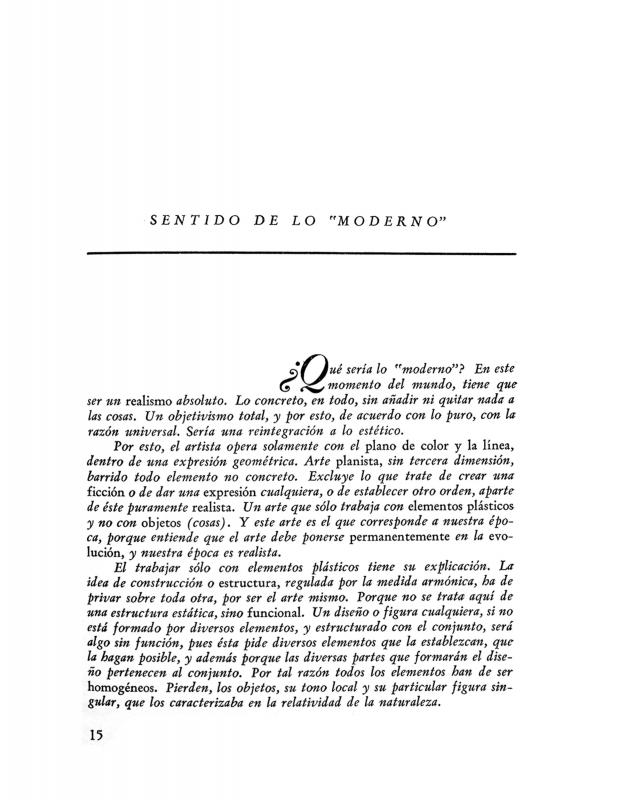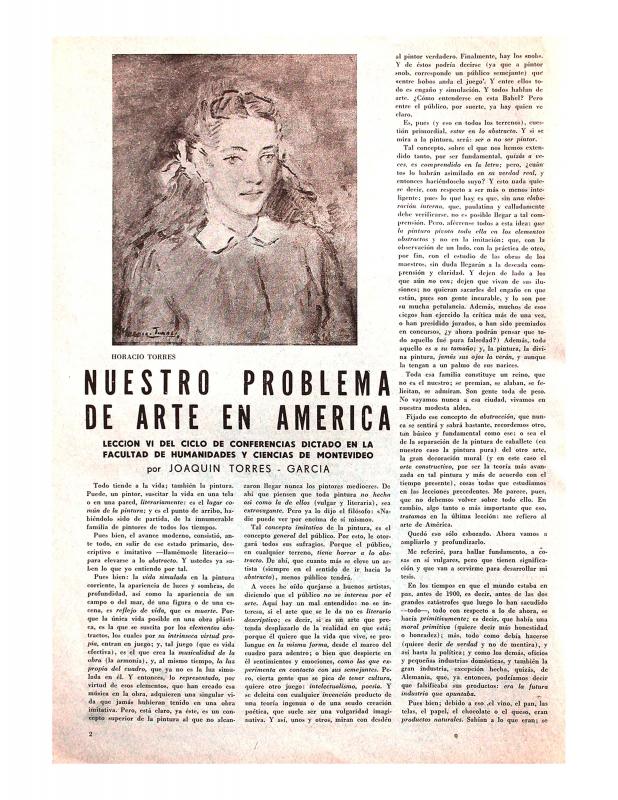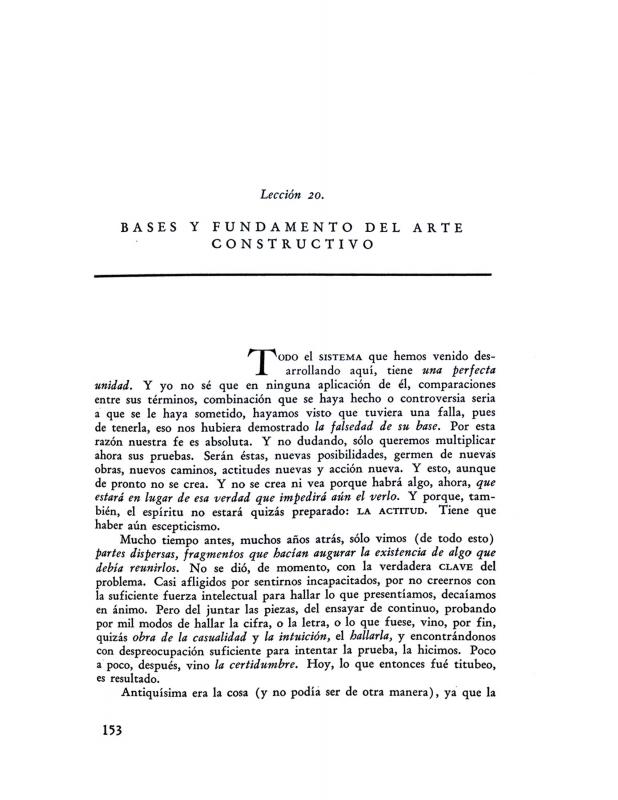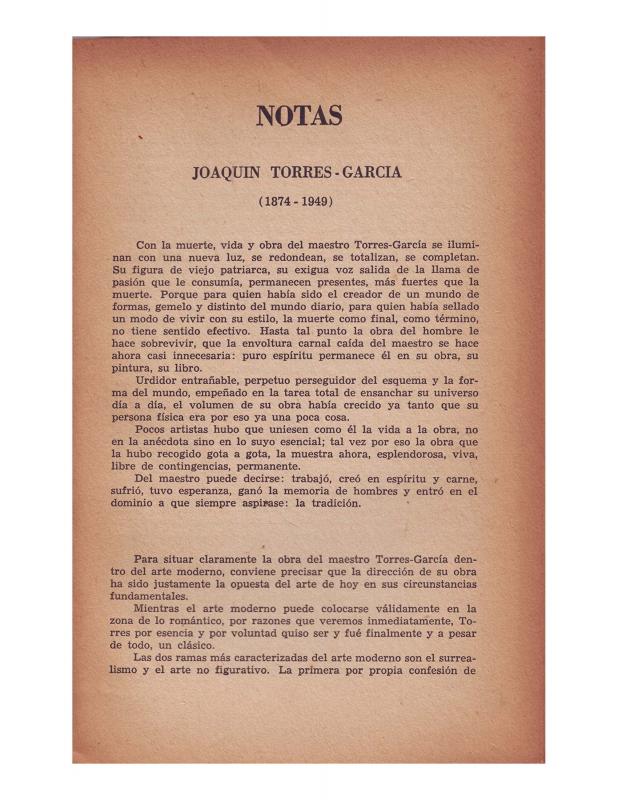In this “Introduction” Joaquín Torres García (1874–1949) touches on some of the ideas he discusses in the book’s preface, “Sentido de lo moderno” [see it in the ICAA digital archive (doc. no. 1242015)]. He sees the crisis in contemporary art as the reflection of a cultural abandonment of “universal values.” Written in 1942, his reflections focus on the basic features of his aesthetic theory that he expressed in his “Lecciones,” which shed light on his teaching objectives. JTG was the most productive Uruguayan artist in terms of theoretical thinking over the course of time; his articles and essays (usually written in the third person) recorded his social criticism and his philosophical and aesthetic arguments. These writings reveal a strong tendency to preach, and include traces of mysticism and Platonic ideas. He claims to be able to detect the presence of universal laws in art that have been analyzed and applied for centuries; laws that connect man, nature, and the things that man has created in an eternal reality that can be discerned through the study of “deep science.” Noting that they are most clearly discernible in archaic societies, he rates them and ranks them (in his spiritual-formal explorations) as classical elements. In those terms he lauds the indigenous civilizations of the Americas, whose art faithfully reflects an eternal, unchanging reality that is in harmony with general constructive theory [on that subject, see in the archive “Nuestro problema de arte en América” (doc. no. 1238773); “Bases y fundamentos del arte constructivo” (doc. no. 1242058); and “Notas. Joaquín Torres García (1874-1949)” (doc. no. 1226591)]. JTG insists that those classical, essential rules do not ban innovation in art, and explains that it is not a question of “imitating” but of understanding them and applying them. Following this train of thought, he disapproves of naturalist styles that emphasize sensory, anecdotal, or personal experience, all of which, in his opinion, distort reality. In short, the author reiterates that all the lessons in this book are based on the concept of “structure,” and that art evolves with “rules” that are connected to “the great law” that governs everything, which is why structure, the Constructive Rule, and the Universe are one and the same thing.




